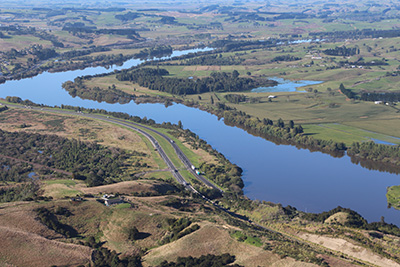Why are we doing it

Water quality is our region's number one priority
We’ve made progress and in some ways our rivers are much cleaner than they were 70 years ago. The Waikato River was once considered one of New Zealand’s dirtiest, and while not pristine today, things have improved.
In the 1950s, untreated point source discharges, such as sewage from towns and waste from factories and mills, went straight into the rivers. Since the 1970s, there have been major improvements to how we treat urban and industrial wastewater in the Waikato.
Today, the biggest risk to water quality in the Waikato is from non-point source discharges, or contaminants from a wide area, such as run off from farms. Put simply, what we do on the land impacts our water, and changes in land use and intensification have led to an increase in contaminants in the water.
Managing water quality is an incredibly complex task and we still have a long way to go to make sure our rivers are swimmable and safe for food collecting along their entire length.
Healthy Rivers/Wai Ora: Proposed Waikato Regional Plan Change 1 is our opportunity to protect the environment and ensure that what we value as a community is here for future generations.
We all want healthy rivers, profitable, sustainable farms and strong communities
Water contaminants
The proposed plan change focuses on four main contaminants: nitrogen, sediment, phosphorus, and bacteria.
Biodiversity opportunities
The Waikato is home to more than 900 native plants, 124 native bird species and 22 types of native fish, crayfish and shrimps (just to name a few!) Many of our native species are under threat due to habitat loss, but what we do on the land can make a difference for these native plants and animals.
Improving the way we use the land and water quality means better homes for our native plants and animals. Landowners have an opportunity to enhance the area where they farm by planting native trees and bush, retiring areas that aren’t suitable for farming and improving local wetlands, lakes and rivers.
Managing biodiversity is not a requirement of the proposed plan change, but farms offer arguably the best opportunity to enhance biodiversity. Farmers and farming communities may choose to design their Farm Environment Plans with this in mind. In doing so they may be eligibe for funding support.
Waikato Regional Council is passionate about biodiversity and we want to help landowners find ways to include native plants and animals in their decisions and actions.




To ask for help or report a problem, contact us
Tell us how we can improve the information on this page. (optional)